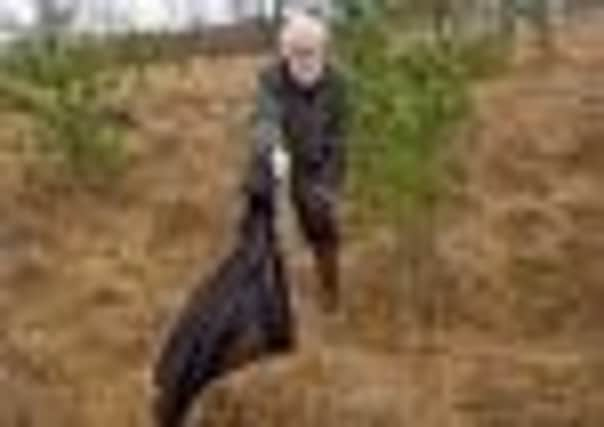Naturalists hunt new members


The YNU’s emphasis is more towards the training in field skills and teaching the recording, surveying and monitoring methods for those people whose interest has already been stimulated.
“The mission statement has barely changed for decades,” says former president Dr Terry Crawford. “It basically says that we are about studying and recording the fauna, flora and geology of Yorkshire, and then collating all this information and making sure it is available in perpetuity.”
Advertisement
Hide AdAdvertisement
Hide AdToday, the YNU is among the most respected natural history associations in Britain. It grew out of the burgeoning interest in recording and classifying nature by Victorians, and the spread of literacy and libraries in Yorkshire’s West Riding towns. Details of precisely how it started, in 1861, are unclear, but it was the result of local natural history groups in places like Heckmondwike, Halifax, Huddersfield and Wakefield, coming together.
Each society was within walking distance of an assembly point or meeting place. Members would walk to this point and collect or observe material along the way, which would then be discussed at the meeting. Someone considered a “mentor” in each field of natural history would discuss the material collected and try to identify it.
Originally called the West Riding Consolidated Naturalists’ Society, a meeting in Pontefract, on April 2, 1877, changed this to the present name.
The field excursions began to have more purpose with “no attractions to the half-hearted in the form of sight-seeing or field lectures”. It also opened its door to those “beyond the reach of a local society”, allowing individuals to become members in their own right.
Advertisement
Hide AdAdvertisement
Hide AdIn 1875, it began to publish a monthly journal, The Naturalist, now one of Britain’s longest-running natural history publications.
In the first half of the 20th century, the YNU was run mainly by formidable academic types. One was described as a “familiar figure, trimly bearded and knickerbockered as one in uniform, for so long a familiar and sometimes devastating figure at field and indoor meetings alike,” and “a stickler for procedure [whose] interventions and stentorian sotto voce stage directions to a fumbling chairman ring down through the years”.
Terry Crawford says that today, the “stickler for procedure” aspect is still much in evidence. It is still a “union” of natural history societies in the old county of Yorkshire. Specialist affiliates range from the Bradford Botany Group, East Yorkshire Bat Group, Mid-Yorkshire Fungus Group to the Yorkshire Mammal Group. Membership of any affiliated organisation automatically includes membership of the YNU, although there is a modest individual charge to receive the YNU’s numerous publications.
The Union is proud of the fact that the British societies for fungi and molluscs can trace their origins to the YNU branches.
Advertisement
Hide AdAdvertisement
Hide AdTo celebrate the YNU’s 150th anniversary, a group of members has collated and published, in modern terminology, all the information available on Yorkshire records of butterflies and moths up to the early 20th century, originally published as “lists” between 1883 and 1922 by one of the YNU’s celebrated members, George T Porritt, of Huddersfield.
Among Porritt’s most fascinating work was the study of the peppered moth, which in the north of England over a 50-year period in the 19th century, changed from a light colour that was camouflage against tree lichens, to a darker colour when soot from the Industrial Revolution blackened tree trunks and pollution killed the lichens. It was one of the most dramatic examples of evolution in action.
Some of the most popular events in the YNU’s calendar are five annual field excursions between May and July, visiting each of the five vice-counties of Yorkshire, the sub-divisions used for mapping and recording wildlife. Members divide into special-interest groups then re-assemble at the end of the afternoon to summarise findings.
Recently, at Brockadale Nature Reserve, near Wentworth, the conchological group confirmed that the very rare and minute snail, Truncatellina cylindrica, was still to be found at one of its classic sites.
Terry says: “It was a very significant event.”
Advertisement
Hide AdAdvertisement
Hide AdSome years ago, the YNU’s membership was getting increasingly elderly. Terry, who is 65 this year, was one of the youngest present at some meetings. But during his term as president, more younger members were recruited.
To mark its anniversary, the YNU is offering reduced rate membership to all new members for £15 a year (normally £25). Details at www.ynu.org.uk